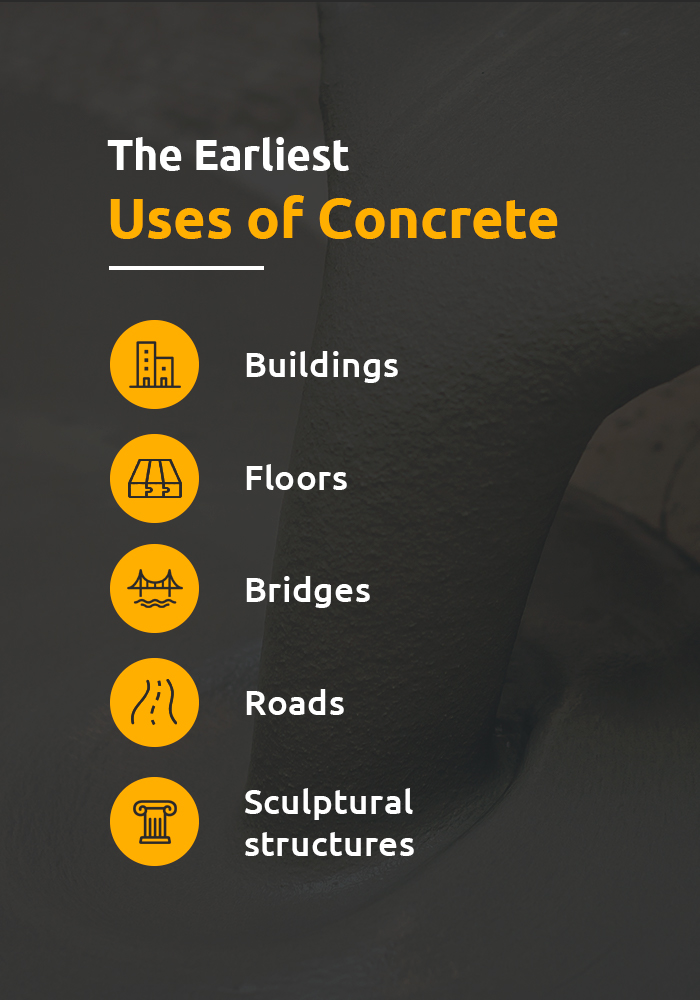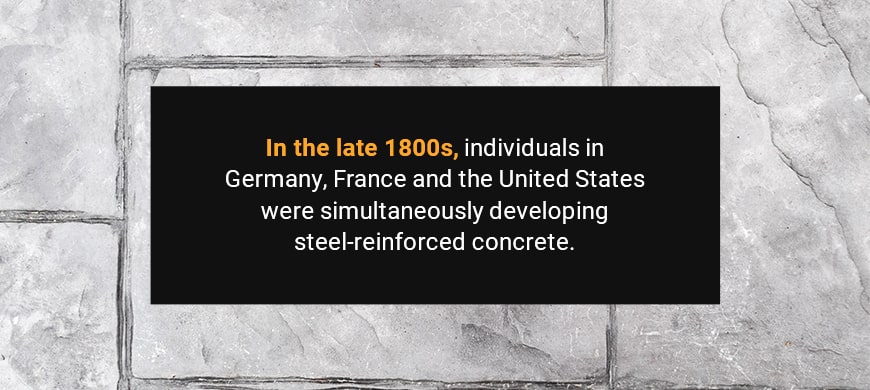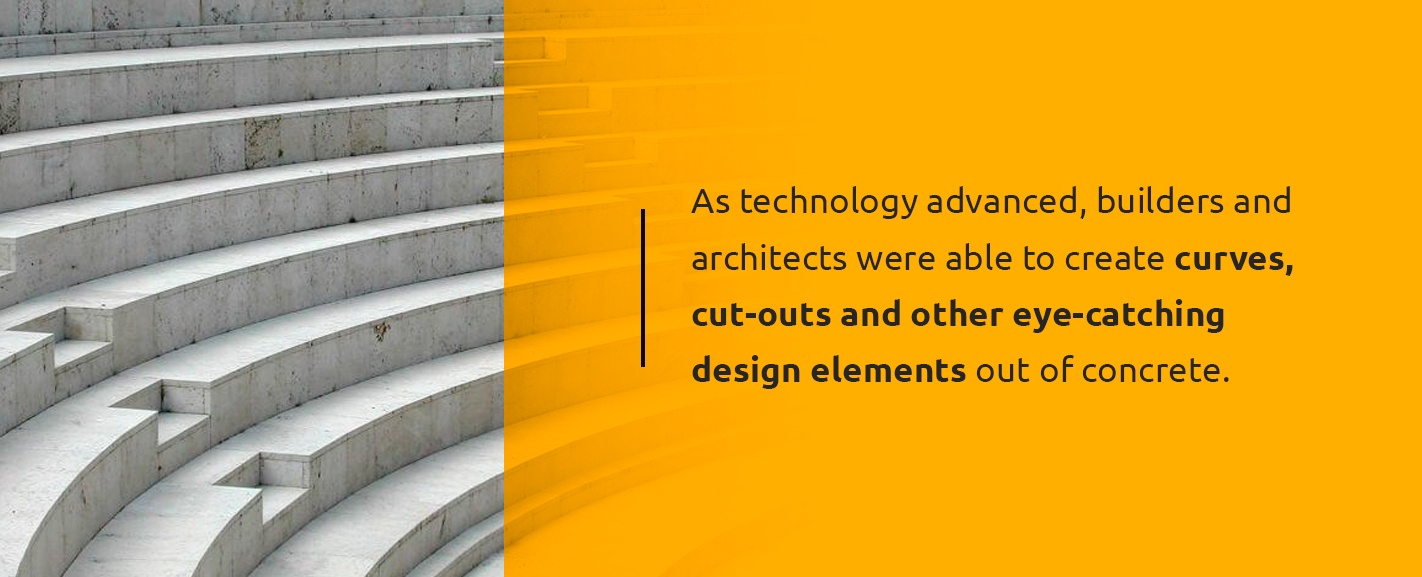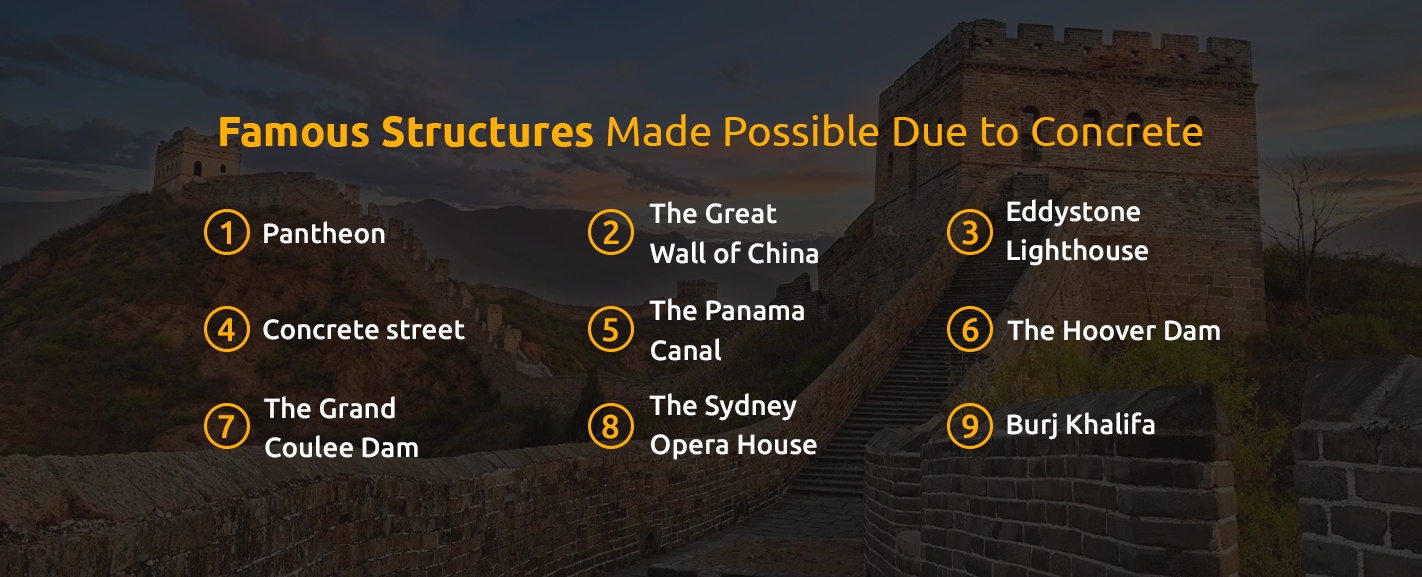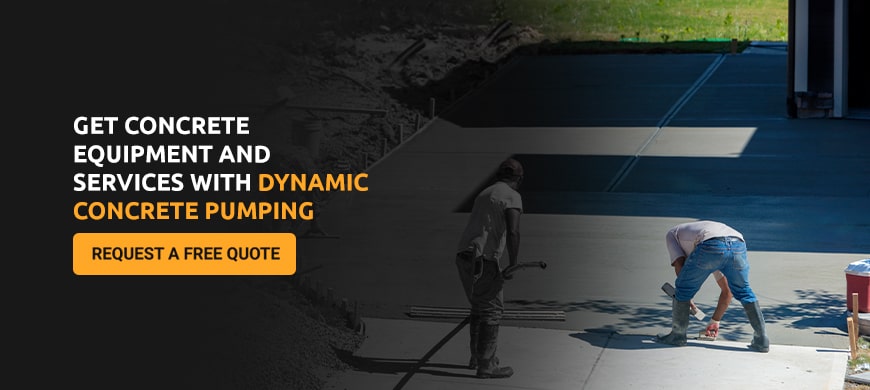
The History of Concrete
Posted By:Dynamic Concrete Pumping , Date: Oct 8, 2019
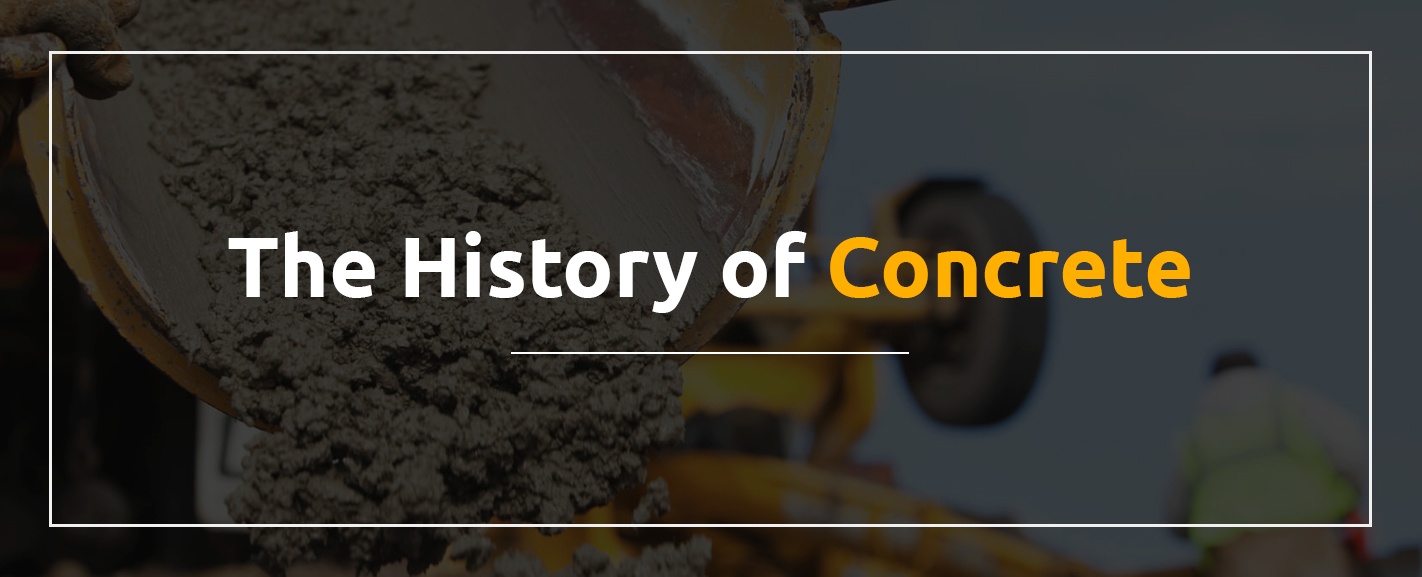
With its use in sturdy, modern constructions, you may not think of concrete as a historic building material. However, the substance comes with a rich past. Just because there weren’t cement trucks driving around during the days of ancient Rome doesn’t mean past cultures couldn’t build with concrete. They had their own ways of adapting and using materials.
In learning about the history of concrete, we start to understand how it’s used today. We’ve gathered some key periods throughout history, along with famous and historic concrete structures, to help you learn about the substance.
We’ll look at concrete as a mixture of large and small particles combined with a type of paste. The paste sets and holds the particles together, which can then be used as a building material. We’ll also bring up some similar materials that have overall differences.
Throughout history, cultures have used the following products to build concrete:
- Cement: This fine powder creates other materials like mortar, concrete, stucco and grout. Cement acts as a binding agent in these building products. It’s often made from limestone, but other possible ingredients include clay, silica sand and shells. Whatever different cultures used throughout history depended on what they had access to where they lived. No matter the ingredient, individuals crush and combine them with materials like iron ore before heating them to high temperatures. The resulting product — called clinker — is ground into cement.
- Mortar: Mortar binds bricks, stones and other building materials. It’s made of cement, sand and lime. When builders add water to the mix, the cement activates and then cures as it dries. Grout is a similar product but has more water in it to flow between cracks and gaps. Either substance can act as a glue for other building materials, from tiles to stone.
- Adobe: Sun-dried mud creates adobe bricks. Sand, dirt and other particles in the soil all go into these bricks. Along with water, individuals may also add sticks or straw to the mixture. After drying, the brick shrinks and grows with the weather. Since it isn’t fired in a kiln to cure and is instead dried by the air, it isn’t suited for wet climates. Many of the first uses of building materials like concrete were actually adobe.
The above materials are in the same family, but concrete is the stronger substance. It’s been with us throughout time on countless building projects in an array of different forms. Read on to learn more about the history of concrete and how the material has changed over the years.
When Was Concrete First Used?
What we consider concrete today is somewhat different from the first uses of concrete. Still, similar materials had their importance throughout history. These materials were used to create:
- Buildings
- Floors
- Bridges
- Roads
- Sculptural structures
Cultures across the globe have used concrete and concrete-like substances to build. Because the material has changed over the years, it’s hard to say how long concrete has been around. Through a rough timeline, we know that it existed for thousands of years before the common era. This timeline shows how cultures have used concrete throughout the years:
6,500 B.C.
The first concrete-like buildings were made around this time. Nabatea traders, or Bedouins, created these historical concrete structures in modern-day Syria and Jordan. They found the benefits of hydraulic lime, or concrete that hardened underwater.
To make cement, the Bedouins located silica sand deposits on their territory and combined them with lime before heating the substance in the kilns they used to create pottery. Concrete’s early beginnings set the stage for improved techniques over time.
3,000 B.C.
During this time, Egyptians used mud mixed with straw to create an adobe-like building material. They also developed and used gypsum and lime mortars to bind the adobe bricks together. This is how they built the pyramids, including the Great Pyramid at Giza, which required 500,00 tons of mortar.
Around the same time, builders in China used a form of cement created with sticky rice. They used this form of cement to build boats and other structures, including the Great Wall of China. Many of these structures have even withstood modern attempts at demolition.
700 B.C.
Around 700 B.C., the Bedouins discovered cement that hardens underwater and created kilns for producing mortar. They used that mortar to help construct floors, houses and other structures. During this time, they also began tamping the concrete material and had an understanding that the substance wouldn’t work as well if it were too saturated.
600 B.C.
The Greeks discovered a natural substance that could create concrete when mixed with lime. While they got use out of the substance, they weren’t as advanced with concrete techniques as other cultures.
200 B.C.
By this time, the Romans had perfected building with concrete, though in a different way than we use it today. The Romans would create most of a structure with loose rocks and materials and cement them together by hand with mortar. They even used cosmetic bricks in combination with their version of cement. Using non-structural blocks established concrete as a purposeful and aesthetic product.
For their more artistic endeavors — or those that needed enhanced durability — the Romans created cement from volcanic sand that reacted with lime and water.
1414
The collapse of the Roman Empire made the interest in concrete dormant until manuscripts explaining the substance resurfaced during this year. Then came a new appreciation for the building material. This year serves as one of the many turning points in the history of concrete. It started the chain reaction for the discovery of new ways to make and use concrete for centuries to come.
1793
John Smeaton created a more efficient method of producing hydraulic lime in 1793. He used limestone that contained clay and fired it until the substance turned into clinker. The clinker could then get ground into powder. The product was used to help cement set, and the modernized production made it easier to make concrete and have it set quickly.
1824
This year was very vital in the history of concrete because it’s when bricklayer Joseph Aspdin created Portland cement. Named as such because it was similar to building stones in Portland, England, Portland cement is very strong. To make the cement, Aspdin burned chalk and clay in a kiln until there was no more carbon dioxide. He later refined the portions of limestone and clay that created clinker.
Aspdin helped spur the use of cement and concrete in modern constructions. In his goal to create a better alternative to the Romans’ building material, he inspired competition to create even better versions of his Portland cement.
Bringing Us to the Present
With the earliest uses of cement and concrete came an evolution of the products. We developed plenty of ways to change the substances to work better for us, impacting the history of concrete construction over time.
Contact Dynamic Concrete Pumping
How Has Concrete Changed Over the Years?
Over the years, concrete turned into a more efficient material. We went from using natural substances that resembled cement to enhancing natural materials with man-made processes. As technology advanced, so did our methods of producing concrete and cement.
In the late 1800s, individuals in Germany, France and the United States were simultaneously developing steel-reinforced concrete. At the time, it was used for industrial builds, but it would go on to play a role in residential buildings and other structures.
The Portland cement Joseph Aspdin created wasn’t exactly the same as what we produce today. While Aspdin didn’t include specific ratios or temperatures for making his Portland cement, we know that he couldn’t have achieved the high temperatures we do today to heat substances.
Today, we have a standard formula for Portland cement. It was created back in 1917 by the American Society for Testing and Materials, along with the National Bureau of Standards. The standard formula created a consistent quality no matter when or where someone made the substance.
Even before we developed a formula for Portland cement, builders were using concrete in projects all over the world once again. In the early 1900s, concrete regained public acceptance as a building material, with these types of structures going up:
- A Paris apartment building in 1902
- The first concrete high-rise in Ohio in 1904
- A 328-foot bridge in Rome in 1911
After these and other buildings, ready-mix concrete was developed. In 1913, the material was delivered in Baltimore, Maryland. It helped make job sites more efficient since workers no longer had to mix concrete on-site. Instead, it arrived pre-mixed from a plant in early versions of what we now consider cement trucks.
Some decades later, we discovered that producing small air bubbles, known as air entrainment, improved concrete. After the introduction of air-entrainment substances to concrete in 1930, the building material was easier to work with and less prone to freezing. Now architects in colder climates could choose the material without worrying about cracks or breakage.
Around the same time, builders developed thin-shell concrete. Roofs, domes, arches and other similar structures were made of a thin shell of concrete. Because of the strong, rounded shapes of these structures, they did not require thick layers of the material. The lighter weight of thin-shell concrete makes the rest of the building safer from collapse since it doesn’t need to support a heavy material.
As we worked with concrete, we made it a stronger and more resistant building material. We discovered easier ways to make it, transport it and use it. Along with those discoveries, builders and architects constructed buildings in different styles. Brutalist, modern and other concrete structures include feats and artistic creations such as:
- Yale University’s Paul Rudolph Hall
- The Science Hills museum in Japan
- Jubilee Church outside of Rome
- The Salk Institute research center in California
- The Villa Saitan housing complex in Japan
- The National Museum of Brazil
- The Geisel Library at UC San Diego
These buildings show off concrete’s versatility as a building material. As technology advanced, builders and architects were able to create curves, cut-outs and other eye-catching design elements out of concrete. The substance’s style flexibility allowed it to build churches, museums, housing and more, along with some historical concrete structures.
How Did Concrete Change the World?
Concrete is the world’s most widely used building material. Few other products have the same durability, sustainability, affordability and versatility. Without concrete, some of the most famous structures in the world may never have been built or may not have withstood the test of time.
To fully appreciate how much concrete has impacted the world, let’s look at a few benefits that make concrete a truly unique building material:
- Sustainability: Concrete provides energy efficiency and lower life-cycle costs, making it one of the more sustainable building materials. Over the past 47 years, cement producers have achieved a reduction of 35% in the energy needed to produce a metric ton of cement. Additionally, exposed concrete absorbs carbon from the air and stores it forever in a process known as carbonation, meaning it offsets the emissions from its initial creation.
- Versatility: Builders can shape concrete into almost any shape to fit the needs of any project.
- Resiliency: Concrete is incredibly strong, and concrete structures can withstand natural disasters and weather, which can help save on recovery costs and keep communities safe and secure.
It’s also important to acknowledge how we can learn about history from concrete. Because concrete is so resilient, many of the historical structures that have been built with it over the years are still standing, giving us a window into world history and architectural innovations from different periods.
Concrete has helped communities and civilizations innovate and prosper for thousands of years. Many of the most significant infrastructure developments that shaped the Western world, like the invention of the Hoover Dam, were built with concrete and cement. Without concrete, it’s impossible to imagine what roads, buildings, houses and other infrastructure would look like today.
Famous Structures Made Possible Due to Concrete
We have concrete to thank for many historical and recognizable buildings. Whether they were built millennia ago or within this century, some concrete structures you’ve probably heard of include:
- Pantheon: The Pantheon in Rome is the largest concrete dome that isn’t reinforced. Despite being completed in the year 125, the Pantheon still stands in Rome today. It has a diameter of 142 feet with a 27-foot oculus, or hole, in the center.
- The Great Wall of China: The iconic landmark made of concrete was built over many centuries. Depending on how you define the beginning of the expansive project, creation began during the third century B.C. or some centuries before. Dynasties and kingdoms throughout China’s history fortified the structure, adding to it centuries after its start.
- Eddystone Lighthouse: Located off the coast of southern England, this third iteration of the lighthouse was built during the late 1600s using John Smeaton’s hydraulic lime. The historical concrete structure only failed because the rocks underneath eroded over time.
- Concrete street: In 1891, Ohio became the site of the first concrete street. Known as Court Street, it still stands today. Even though George Bartholomew created the street over 100 years ago, it is twice as strong as the concrete used in modern residential projects. The strength makes it perfect for withstanding traffic.
- The Panama Canal: After failed attempts to create vital development in travel and transport, construction of the Panama Canal finally began in 1904. After 10 years, the project was complete. Concrete played a role in the locks, which helped lift ships as they moved across the canal. Upon its completion, many countries and ports were finally connected.
- The Hoover Dam: The dam itself, completed in 1936, required over 3 million yards of concrete. The power plant and other structures for the dam took another 1 million yards to create. Builders didn’t pour the concrete into one mass, though, because it would’ve cracked and taken far too long to cure. Instead, they filled blocks with concrete to build columns. Tests twenty years later revealed that the concrete had gotten stronger over time.
- The Grand Coulee Dam: Less than 10 years after the completion of the Hoover Dam, builders created the most massive concrete structure ever built. The Grand Coulee Dam in Washington needed 12 million cubic yards of concrete for its completion in 1942. Since it needed four times more concrete than the Hoover Dam, builders used a 2-mile-long conveyor belt to transport the material to the site. Builders used the same method they used to construct the Hoover Dam for the Grand Coulee Dam, only on a much larger scale.
- The Sydney Opera House: This concrete build takes the Southern Hemisphere’s title for the largest concrete structure. Construction began in 1959 and finished in 1973. The project saw its share of challenges, but its completion delivered a magnificent concrete structure. The Sydney Opera House now serves as a destination for culture and tourists from around the world.
- Burj Khalifa: Located in Dubai, the Burj Khalifa was made using reinforced concrete. It will hold the title of the world’s tallest building until the completion of the Jeddah Tower. However, there seems to be no end date in sight for the 1,000-meter-high tower. The Burj Khalifa used over 400,000 cubic yards of concrete along with over 60,000 tons of rebar, or reinforcement.
These modern and historical structures wouldn’t be possible if it weren’t for concrete. Their height, strength, size and more are a display of concrete’s abilities. The substance’s usefulness didn’t die out after the B.C. years, either. Today and far into the future, we’ll continue using concrete to construct innovative buildings, homes, apartments, hotels, sculptures and plenty more.
Get Concrete Equipment and Services With Dynamic Concrete Pumping
Participate in the history of concrete today with the services and equipment from Dynamic Concrete Pumping. We have over 40 years of experience helping contractors bring architectural visions to life, adding to the legacy of historic concrete structures. If you need concrete services or equipment, contact us at Dynamic Concrete Pumping.


